This weekend, the fourth movie in the spectacularly successful Step Up franchise opens in theaters across America. In it, as in every other movie in the surprisingly compelling series, a group of dancers comes together to help solve a problem. In this case, the problem is that the wealthy developer father of the aspiring dancer/Anglo female lead is trying to buy up and gentrify a traditionally Latino neighborhood in Miami. In response, the local dance crew adopts the tactics and rhetoric of the Occupy Wall Street movement in order to mount public protests and defeat the displacement of their working class community.
This may sound like pretty heady political terrain for a movie that seems little more than an extended music video populated by scantily clad former So You Think You Can Dance? contestants. But, there is actually a lengthy history of pictures like this -- which we will loosely call Dance-Off movies -- tackling social justice issues.
John Waters, who wrote and directed the transgressive dance-off movie Hairspray (among myriad other masterpieces), believes in the power of art as a form of combat. "Any artistic endeavor, when it's a contest, is a war," he told us over the phone from his summer residence in Provincetown. "The Battle of the Bands! It's a contest, it's a sporting event."
Dozens of dramatic films, popular and not, have used dance -- and, more specifically, competitive dancing -- as a means to achieve a collective quest for social justice. In every one of these movies, a group of dancers (or, occasionally, a group of individuals represented by a single dancer) come together to use movement to literally battle oppression. Depending on the film, they combat direct forces like racism (Bring it On, West Side Story, Saturday Night Fever, Hairspray), classism (Stomp the Yard, Breakin', Dirty Dancing), sexism (Step Up 2: The Streets), elitism (Beat Street, You Got Served, Flashdance, Step Up), size-ism (Hairspray), doctrinaire religious repression (Footloose), the monopolistic concentration of wealth (Billy Elliot, Step Up 3D, Step Up: Revolution), or other more allegorical expressions of tyranny (They Shoot Horses, Don't They?).
Almost always represented as underdogs, these dancers inevitably triumph through the power of their collective wills. Like any good revolutionaries, their success is often predicated at least in part on the pivotal addition of converts from the traditional ruling class -- Jennifer Grey's Baby Houseman in Dirty Dancing is a key example. But these radicals typically eschew the prototypically American reliance on guns -- even if their opponents are armed -- waging battle solely with the profound and pointedly unconventional nature of their moves.
This form of fictional confrontation has drawn its power from real life situations. Legendary choreographer Bill T. Jones -- currently directing and choreographing the Broadway smash Fela! -- talked with us about movies like Breakin' and Beat Street pulling from actual social dilemmas. "Breakdancing began with people like Afrika Bambaattaa who were trying to redirect the energy of young Black and Hispanic men," Jones said. "Rather than to go into gangs and shoot and knife each other, they would dance off. And it allowed them to preen, it allowed them to bond, and it allowed them to have an aesthetic expression. And to challenge each other, ultimately, in a way where no one got hurt."
Harry Shum Jr., who plays choreo-graphic Mike Chang on Glee, produces the new Internet dance show Remixed and has had roles in numerous dance-off films, agrees that dance works as a vehicle for social justice, because dance is often born of the reality of social injustice. "I think it stems from a quest for equality," he told us. "If you look at hip hop as a form of dance, that was a way to give voice to kids in the streets, underprivileged kids who didn't have access to training or money."
Creating and showcasing novel art forms has a long history in American cinema. Cheering for the underdog is also an American institution. And, though the issues and tactics in these movies are often portrayed as insurrectionary, the result is also typically American, in that it's more integrationist than truly seditious. But the question remains: given the host of other visually compelling, and fundamentally American, categories through which such battles could be waged -- the build-off, the drive-off -- why dance as the radical motif of choice?
"I think dance has always confronted social issues," Bill T. Jones told us. That, given our transient corporeality, "when someone dares to get up -- for no other reason than that it feels good -- to move around in space and time, there is something rebellious about it. Gravity keeps us two feet on the floor, lest we fall over, or fall down," he said. "If you think that you want to play with gravity, you're already playing with that which is a danger."
But it's also possible that the popularity of the dance-off as a means of achieving justice is rooted in something much more prurient and elemental. "It's simple," John Waters told us. "People like to watch kids dance. It's the last step before sex."